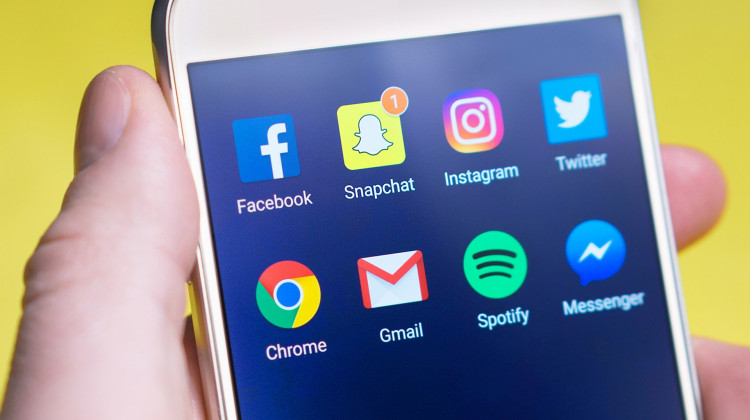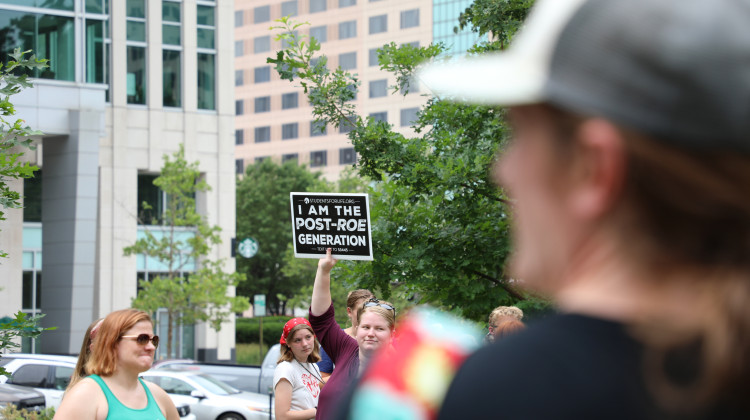
Up to 95 percent of teens use a social media platform, according to a U.S. Surgeon General report.
PixabayChildren and teenagers may be at higher risk of experiencing depression and anxiety from social media use, according to a U.S. Surgeon General report released last week. But social media connections to community and resources may also contribute positively to their mental health. More research is needed to understand how networks like Facebook and Instagram affect young people during a critical period of brain development.
The report comes as other data have shown that children experienced increased rates of mental health concerns during the pandemic. According to the U.S. Centers for Disease Control and Prevention, groups like girls, people of color, and LGBTQ youth have been hit hardest.
Almost half of Hoosier students felt sad or helpless almost every day for two weeks in 2021.
The report mostly focuses on the harms of social media, which it says come from what teens see on the platforms and how they use them, like content normalizing a suicide pact or an infinite scrolling feature. As with broader mental health trends, marginalized groups may experience these effects more intensely.
A child who is intersex, transgender, or gay may not know anyone like them in their community. The ability to connect with community, support and resources they cannot find in their daily lives can be a lifeline for a group that experiences disproportionate rates of mental health problems, said Lorenzo Lorenzo-Luaces, an associate professor of psychological and brain sciences at Indiana University Bloomington. He researches technology’s intersection with depression and anxiety.
But there’s potential for kids to encounter cyberbullying, hateful content, or messages impacting self-esteem and body image, says the report. And the amount of time spent online, the activities or interactions kids experience, and social media’s potential to affect other activities like sleep may also have an effect.
Additional research would help bring clarity to the questions about potential harms and benefits at the heart of the report. Some of these evidence gaps include what factors may protect youth, how social media use interacts with a child’s developmental stage, and even what kind of content, frequency, and intensity of social media use cause the most harm.
“Don’t fret, do not take this to mean that we know for a fact that social media is bad for your kids and adolescents, and now we need to find a way to get them off of it,” Lorenzo-Luaces said.
He likens social media to television: there may be violent content or entertainment, “but most of the time, it’s just a way of wasting time.”
Historically, the burden of moderating kids’ and teenagers’ social media use has fallen to kids and their parents, but the report calls on researchers, technology companies, and policymakers to prioritize understanding these influences on young people’s mental health and bolstering their safety.
YouTube, Instagram, and Facebook currently require someone to be at least 13 years old to create an account. TikTok’s age requirement is 12 or older.
Teens should pay attention to the feelings that come up when they’re using social media, Lorenzo-Luaces said. If they log into Instagram and feel uncomfortable with their bodies, “it’s like your brain’s way of telling you that that way of using Instagram is not good for you,” he said.
If you or someone you know is struggling or in crisis, help is available. Call or text 988 or chat 988lifeline.org. If you are a member of the LGBTQ community, you can also contact The Trevor Project at 1-866-488-7386.
U.S. Surgeon General advisory’s recommended actions:
Policymakers
- Strengthen protections for children
- Require tech companies to share public data on health impact of social media
- Support digital and media literacy in school curricula
- Support increased funding for research
Tech companies
- Increase transparency and independent safety assessments
- Prioritize health and safety in platform design
- Foster safe and healthy online environments, keeping in mind the needs of minorities
- Share data
- Adjust systems to be more effective and quick to address requests and complaints about youth health and safety
Parents and caregivers
- Create a family media plan
- Encourage tech-free zones and in-person friendships
- Report cyberbullying, abuse and exploitation
Kids and teens
- Ask for help
- Create online and offline boundaries
- Track time, block unwanted people or content, use privacy settings
- Be careful about sharing personal information
- Let someone know about harassment or abuse and don’t participate
Researchers
- Make the impact of social media on youth a research priority
- Standardize measures and definitions for research purposes
- Study best practices for healthy use
- Coordinate and collaborate with other researchers
Contact data journalist Zak Cassel at zcassel@wfyi.org. Follow him on Twitter: @zakcassel_.
 DONATE
DONATE








 View More Programs
View More Programs

 Support WFYI. We can't do it without you.
Support WFYI. We can't do it without you.